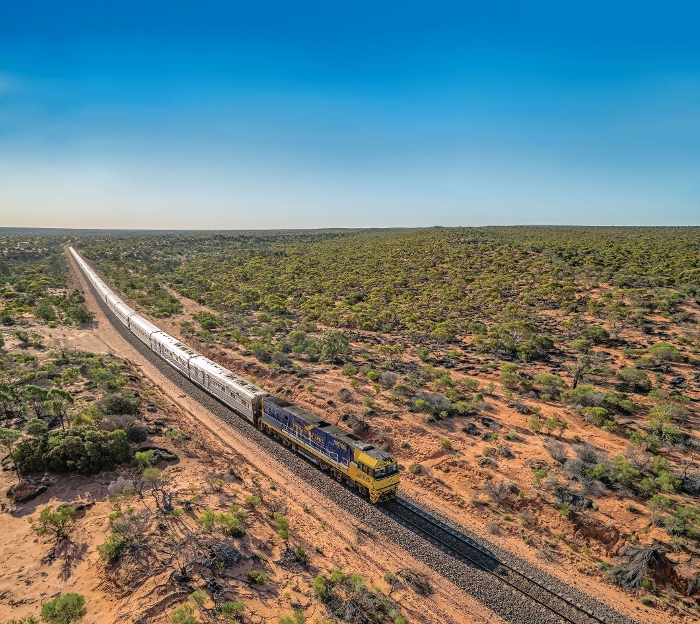

RDA highlights 23 projects to build the state to 2028

Progressing 23 high-priority infrastructure projects across regional South Australia could deliver more than $21.45 billion in economic, social and environmental benefits for local, state and national communities.
The Regional Development SA Infrastructure Prioritisation report, released today, has earmarked the most important infrastructure developments that support the $65.99bn regional investment pipeline RDAs track and consolidate for the State Government, and has the potential to create 21,702 construction jobs.
Among the highest-priority projects identified in the Regional Development South Australia (RDSA) report is the Northern Water project (NW) – a 600km pipeline delivering 260ML/day of desalinated seawater from the Spencer Gulf to the Upper Spencer Gulf, Eyre Peninsula, and the Far North.
The NW is a 25-year project which remains in the feasibility stage and is expected to generate a once in a generation growth opportunity in industries including hydrogen, green energy, mining, and pastoral pursuits.
RDSA is a member-based, not-for-profit organisation that supports economic development across seven regions and metropolitan Adelaide, with each funded by federal, state and local governments.
RDSA prepares five-yearly Infrastructure Prioritisation reports, which summarise priority projects, their likely impacts on the state and the resources required to successfully deliver these projects. This allows a focus on broader state needs and promotes transparent decision making. Since the 2018 RDSA Infrastructure Prioritisation was produced significant progress has been made. Of the top 20 projects, 11 projects are funded and completed or under construction, with a total capital expenditure of $2.02bn.
The latest report, which was finalised in December, focuses on projects which would support the need for more regional housing development, address the “childcare desert” impacting several regions and much-needed jetty upgrades.
RDSA Chair Hon Rob Kerin said the report’s priorities aligned with the State Government’s A Better Housing Future plan and the Australian Government’s Housing Accord. Mr Kerin said while the report was not specifically focused on housing, it included infrastructure to support community growth such as highway and freight route upgrades, water projects, telecommunications upgrades, energy developments, irrigation and master planning.
“Many communities where work is available are unable to accommodate workers moving to their city or town,” Mr Kerin said.
“By recommending the improvement to regional infrastructure – such as telecommunications, energy, water and jetty projects - we’re hoping it will pave the way for significant regional growth, which not only builds community strength, but builds capacity and improves the social fabric of surrounding areas.
Mr Kerin said the RDSA’s prioritised list of projects would deliver more viable regional communities, improving health and wellbeing and re-attracting regional youth back home. The report also highlighted the importance of high-priority projects interconnected across regions, such as NW, freight connectivity, and tourism projects including extensive wine trails and transport routes.
Circular economies – relating to reducing waste, energy production, pollution and recycling – were also emphasized as being growth opportunities for regional communities, potentially supporting the creation of an additional 25,700 new jobs and reducing the state’s carbon emissions by 27 per cent as per work undertaken with Green Industries (SA).
“Our regions drive our state’s economy, particularly when it comes to agricultural production, resources, construction and health care,” said Mr Kerin. “By prioritising and advocating for projects, we can promote the state’s growth, which will benefit every South Australian.
“If supported by targeted investment and a robust pipeline of required skills and resources, the state can continue to develop a smart, sustainable and inclusive economy which is competitive on a national and global scale.”
The full report can be accessed at https://regionaldevelopmentsa.com.au/resources/.
Recent News
- Which charity would your favourite furry friend support? Dig deep for Guide Dogs.
- Adelaide business leaders turning a ‘spotlight’ on homelessness
- Yugo announced Best Student Housing Provider
- Riverland Wine welcomes Chinese removal of Chinese tariffs
- Volunteering is a badge of honour for SA students
- Believe Housing Australia launches much-needed affordable rental homes in Adelaide
- All-woman crew building affordable housing for SA women impacted by violence
- Flinders Port Holdings among Australia’s best privately-managed companies
- Riverland growers to benefit from increased Rural Financial Counselling Service funding
- Celebrating our Guide Dog graduates, retiring Guide Dogs and our newest training group
- Scotch College Adelaide to host the 102nd annual SA Schools’ Head of the River Regatta
- Groundbreaking start for award-winning Waterford Purpose Built Student Accommodation Project
- CH4 Global named one of America’s Top GreenTech Companies by TIME Magazine
- DETMOLD MEDICAL LAUNCHES NEW MASK RANGE
- Blog: Crafting credibility
- Riverland grape growers call for financial support measures to save local industry
- END OF AN ERA FOR BOILEAU BUSINESS TECHNOLOGY
- Hundreds flock to 24/7 National Pharmacies store in first week
- Flinders Port Holdings welcomes PV Spirit to its fleet
- Adelaide welcomes back Emirates








